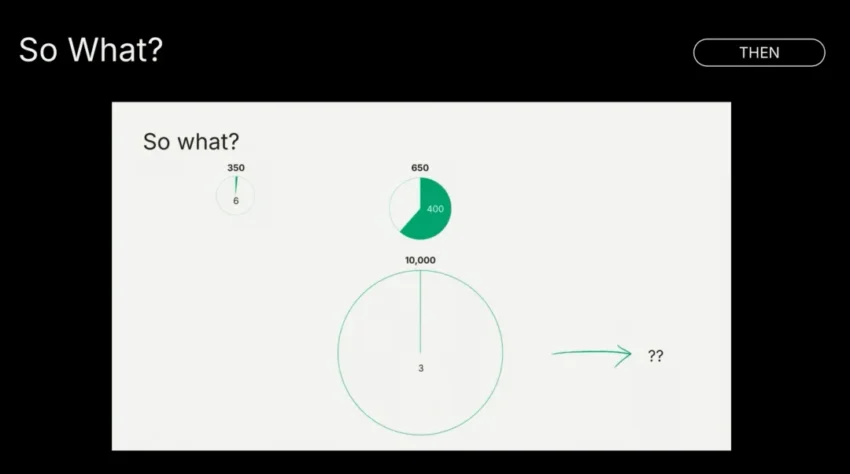While the entire technology circle is still busy chasing the AI wave, Sequoia Capital has begun to think about the deeper opportunities behind this technological revolution. At their annual AI Ascent conference, three core partners Pat Grady, Sonya Huang and Konstantine Buhler shared their unique insights into AI development trends and market opportunities.
Rather than being filled with daunting technical terms, the speech reveals in plain language how AI can change the business world and our lives. From market size to application-layer value, from data flywheel to user trust, they reveal the key success elements of AI entrepreneurship. More importantly, they predicted the arrival of the AI agent economy and how it will revolutionize the way we work. For entrepreneurs and investors, this sharing reveals a clear signal: the wave of AI has arrived and now is the time to move forward at full speed. Don’t worry about the noise of the macro economy, the wave of technology adoption is enough to drown out any market volatility.
If you want to understand why Sequoia believes that the AI market is ten times larger than cloud computing, how startups can win in this field, and how the upcoming “intelligent economy” will upend our world, this interpretation provides you with a first-hand feast of ideas.
Market Opportunities: Why AI is a trillion-level shock wave
At the beginning of the speech, Pat Grady raised several key questions: What is AI? Why is it important? Why now? And what should we do? The framework comes from Don Valentine, founder of the legendary Sequoia Capital, who uses these questions to evaluate every emerging market.
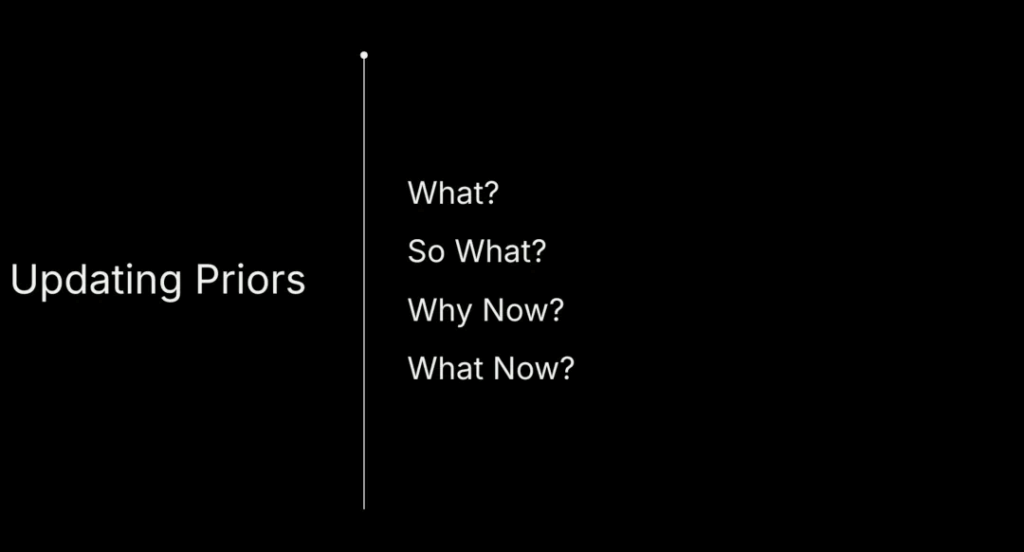
At last year’s AI Ascent conference, Sequoia showed a comparison picture. The line above is cloud computing transformation and the line below is AI transformation. Now, cloud computing is a huge industry of US$400 billion, bigger than the entire market when the software market started. If we follow this analogy, the starting point market of AI services is at least one order of magnitude larger, which is ten times larger than the early stages of cloud computing. In the next 10 to 20 years, this market may become extremely huge, far beyond our imagination.
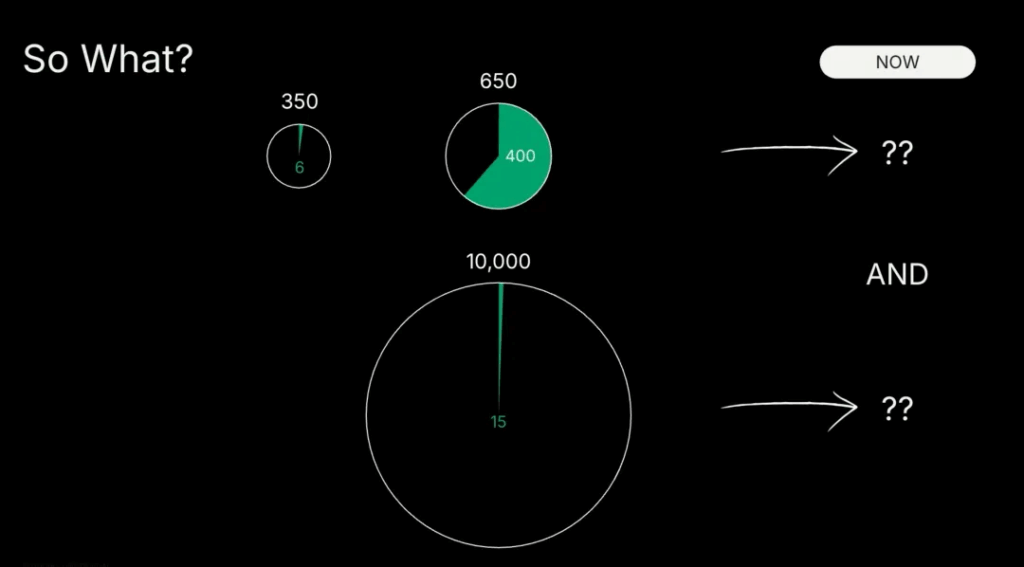
This year, Sequoia updated their view that AI is not only eating cakes in the service market, but also eating cakes in the software market. We have seen many companies start from simple software tools and gradually become smarter, from the co-pilot mode that assists people in their work to the almost completely automated “autopilot” mode. These companies are shifting from sales tools to sales results, from competing for software budgets to seizing human resources budgets. AI is impacting these two huge markets at the same time.
Every wave of technological revolution in history is bigger than the previous wave, and the arrival of AI is faster than any previous technological revolution. Pat explains why this is happening with a simple analysis: you only need three conditions to analyze the physical laws of technology transmission – people must know your product, they must want your product, and they must be able to obtain your product. Compared with the beginning of cloud computing, AI is staggeringly popular. At that time, Marc Benioff, the founder of Salesforce, had to adopt various “guerrilla” marketing strategies to attract people’s attention. As soon as ChatGPT was released on November 30, 2022, the world’s attention immediately focused on AI. At the same time, the channels for sharing information have increased significantly, with Reddit and Twitter alone (now renamed X) having 1.2 billion to 1.8 billion active users per month. Internet users have also increased from 200 million that year to 5.6 billion now, covering almost all households and businesses around the world.
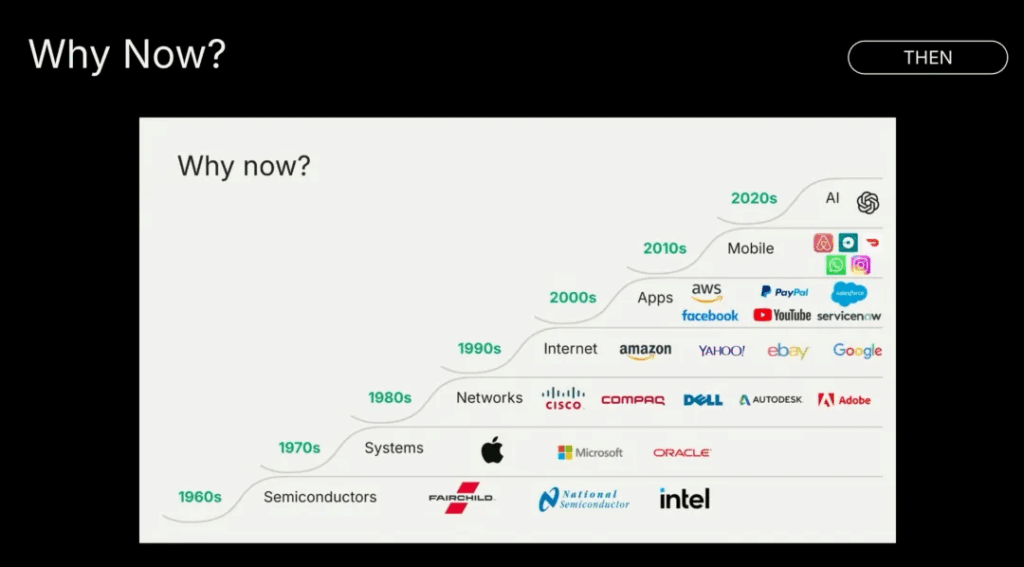
“This means the infrastructure is in place, and when the starting gun sounds, there are no obstacles to popularization,” Pat explained. “This is not a phenomenon unique to AI, it is a new reality of technology distribution, and the physical rules have changed. The track has been laid.”
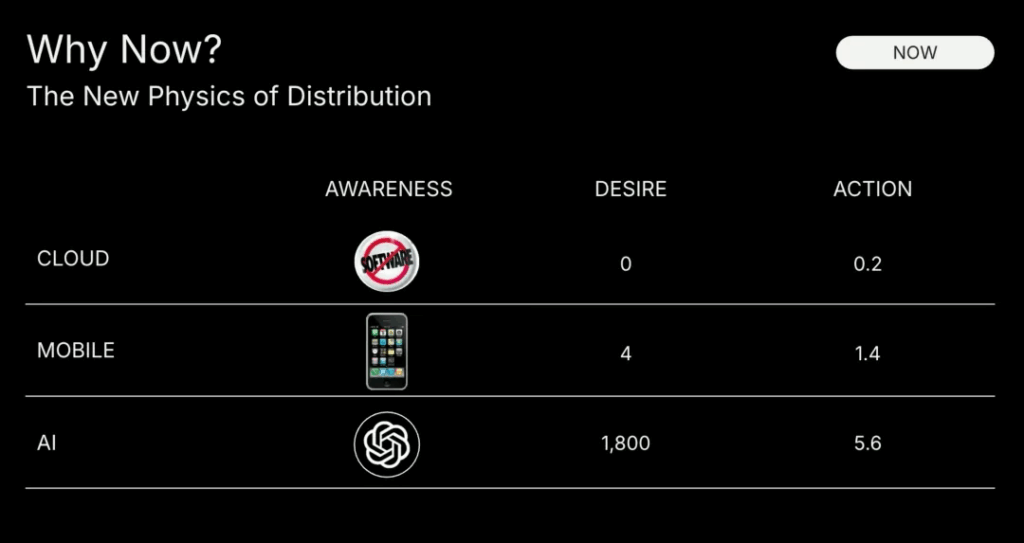
Application is the value high: How to win in the AI era
Looking back at several major technological revolutions in history, whether it is personal computers, the Internet or the mobile Internet, most of the companies that truly achieve revenue of more than US$1 billion are concentrated in the application layer. Sequoia firmly believes that the AI field will follow the same rule: the real value lies in the application layer.
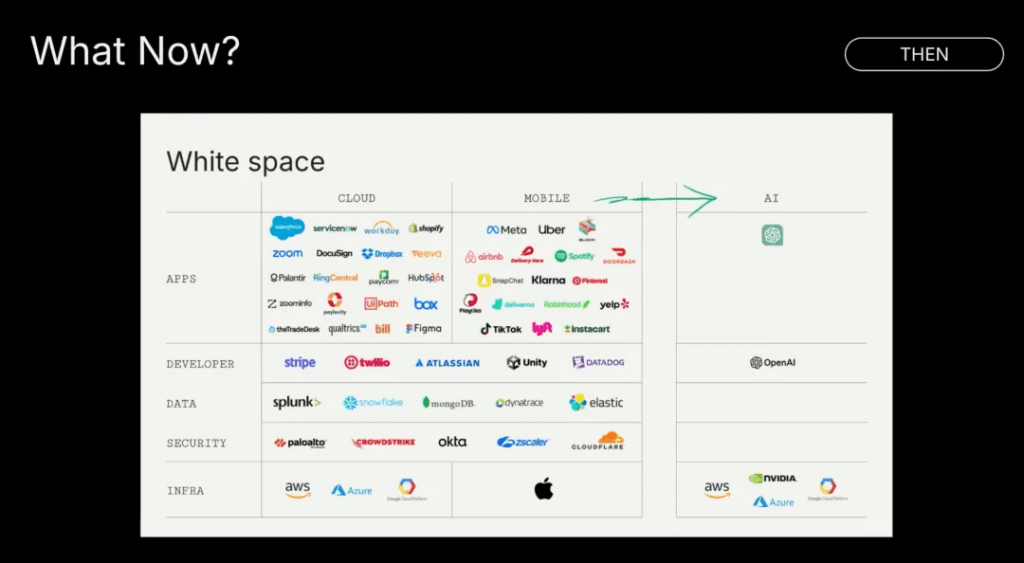
But now the situation is different. With the advancement of large models, they have been able to penetrate into the application layer through inference capabilities, tool usage and communication between agents. If you are a startup, how do you deal with this situation? Pat recommends that we should start from customer needs, focus on specific verticals, focus on specific functions, and solve complex problems that may require people to be in the ring. This is where real competition lies and where value is generated.
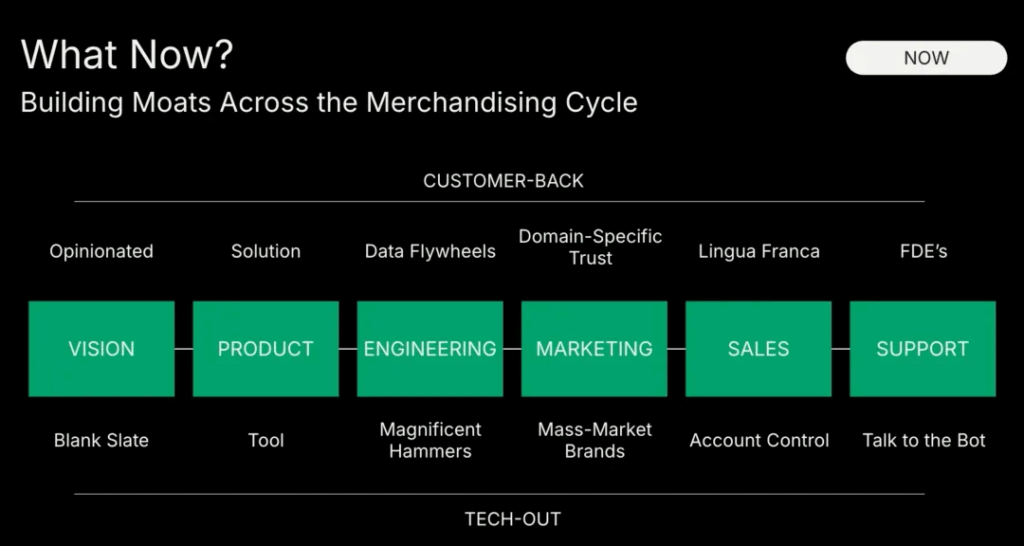

Is there anything special about building an AI company? Pat said 95% of content is no different from building a regular company – solving important problems, finding unique and attractive ways to attract great talent to join. Only 5% are unique to AI, and he particularly emphasized three points:
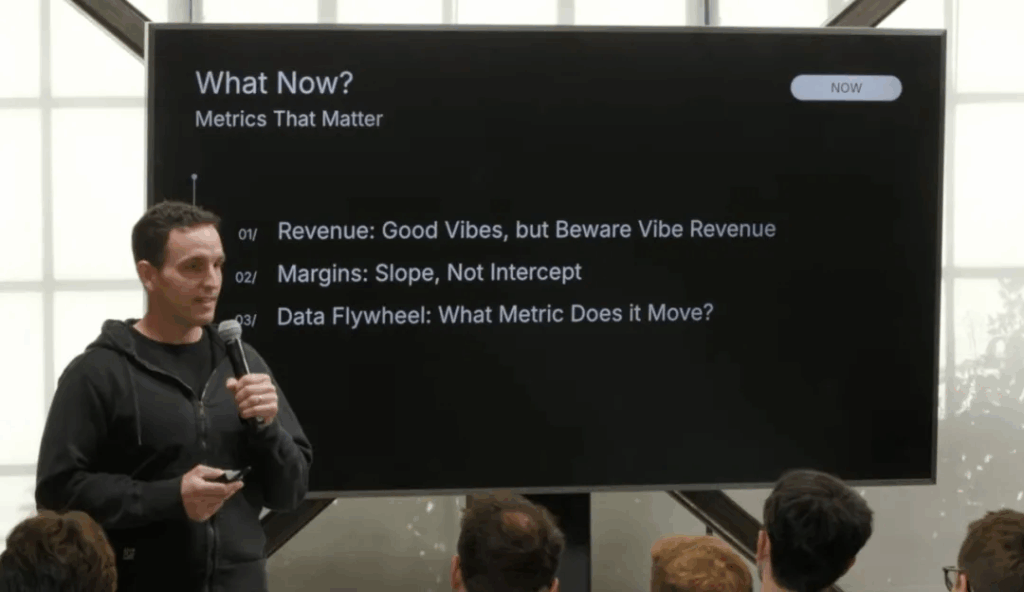
First, be wary of “vibe revenue”. Pat explained that many entrepreneurs like “atmosphere revenue” and it feels very good. The company seems to grow rapidly, but in fact it may be just a customer testing the waters, not a real behavior change. He advises the founders to carefully examine user adoption, engagement and retention rates to see what people are actually doing with the product. Don’t deceive yourself and think that if you have real revenue, the result is just “atmosphere revenue”, which will eventually harm you.
“In the current stage of development, trust is more important than your product.” Pat stressed, “the product will gradually get better, and if the customer trusts you to do it better, you’re fine; if they don’t trust you, you’re in trouble.”
Second, gross profit margin. Pat said they don’t necessarily care what the startup’s current gross margin is, because the cost structure in the AI space is changing rapidly. The cost per token has dropped by 99% over the past 12 to 18 months. If entrepreneurs successfully move from sales tools to sales results and move upstream of the value chain, the price point will also rise. Although gross profit margins may not be ideal now, companies should have a clear path to healthy gross profit margins.
Third, the data flywheel. Pat asked the entrepreneurs in the audience: “Who has a data flywheel? What business indicators can this data flywheel drive?” He pointed out that if this question cannot be answered, then the so-called data flywheel may just be a fantasy. It must be linked to specific business metrics, otherwise it will be meaningless. This is especially important because the data flywheel is one of the most powerful moats a startup can build.
At the end of the speech, Pat used an interesting metaphor: “Nature hates vacuum.” He said that there is a huge “sucking force” on AI in the market now, and all macroeconomic noises, such as tariffs and interest rate fluctuations, are irrelevant. The upward trend of technology adoption completely overwhelms any volatility in the market. “There is a huge suction force in the market, and if you don’t take the lead, others will. So, no matter what we said about moats, indicators, etc., you are now in an industry that needs to run desperately. It’s time to do your best and keep moving forward at the highest speed at all times.”
From hype to real value: AI’s user engagement has increased dramatically
Next, Sonya Huang reviewed the significant progress in AI applications over the past year. She shared an exciting data: in 2023, the ratio of daily active users to monthly active users (DAU/MAU) for native AI applications is very low, meaning that although users are curious to try, they do not use it frequently, and the hype is far beyond their actual value. But now things have been a dramatic reversal. ChatGPT’s daily/monthly active ratio has been rising and is now close to Reddit’s level.
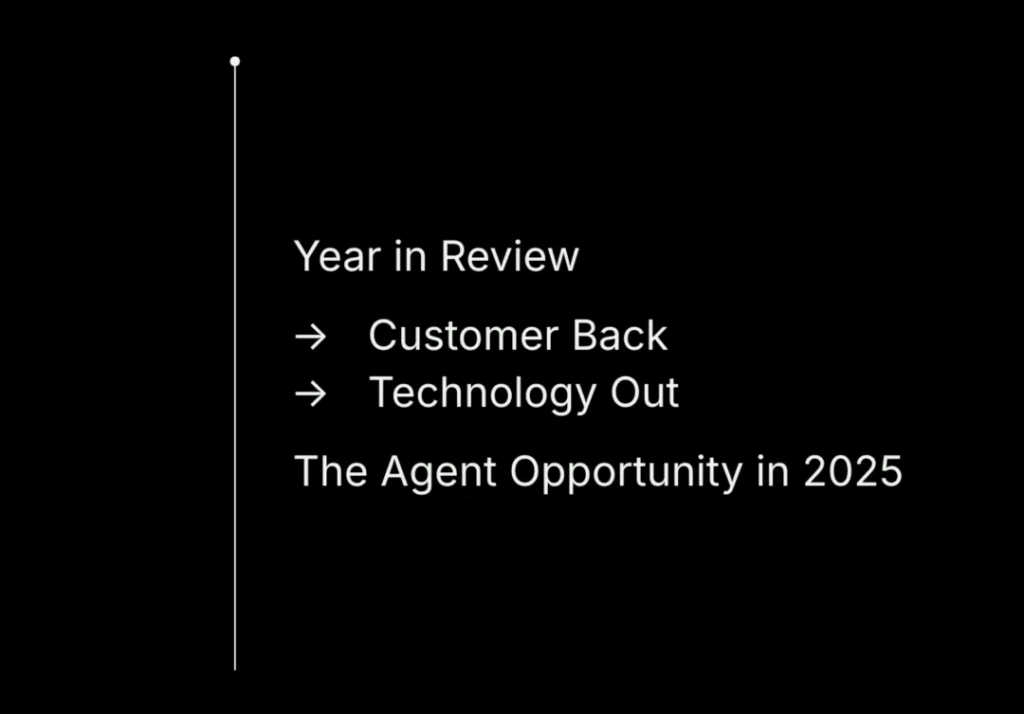
“It’s great news,” Sonya said excitedly, “meaning more and more of us are getting real value from AI, and we’re all learning how to incorporate AI into our daily lives together.”
This use has both a relaxed and interesting side, and has profound practical value. Sonya admitted that she personally burned an amazing number of GPUs in order to try to “ghibli” various pictures. But in addition to these interesting applications, what is even more exciting is that deep-seated applications, such as the advertising field, which can create amazingly accurate and beautiful advertising copy, the education field can instantly visualize new concepts, and the medical and health field, such as OpenEvidence, can better assist diagnosis.
“We’re just touching the tip of the iceberg of possibility,” Sonya said. “As AI modeling continues to improve, what we can do through this ‘front door’ will become more and more profound.”
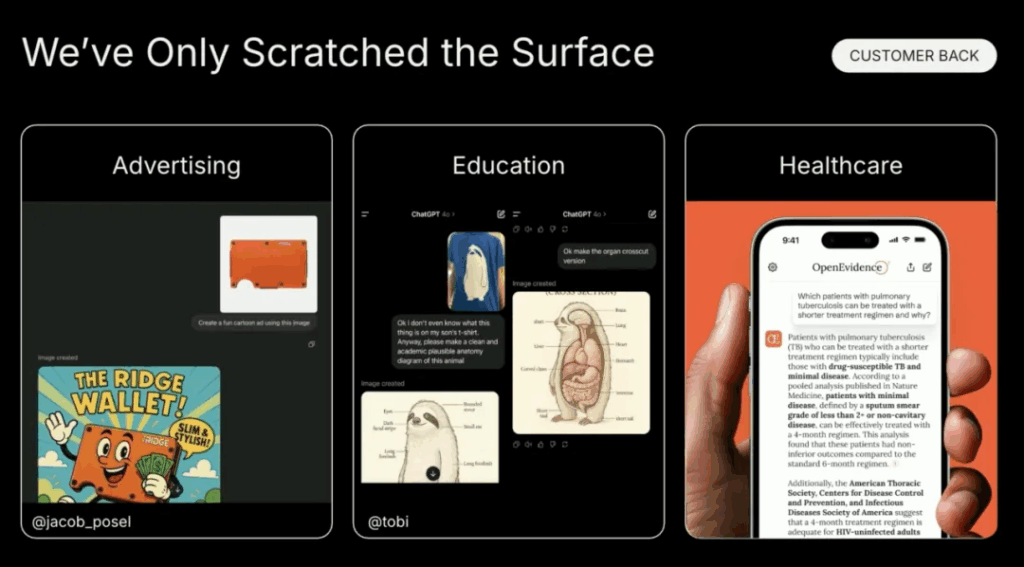
The breakthrough of voice and the explosion of programming: Two key areas
In 2024, there are two breakthroughs in the field of AI that are particularly worthy of attention. The first is speech generation technology. Sonya calls it the “Her Moment” in the field of voice, citing the story of Joaquin Phoenix falling in love with the AI assistant in the movie “Her”. Voice generation technology has completely crossed the “uncanny valley” from “almost mature” and reached a level close to the false and real level.
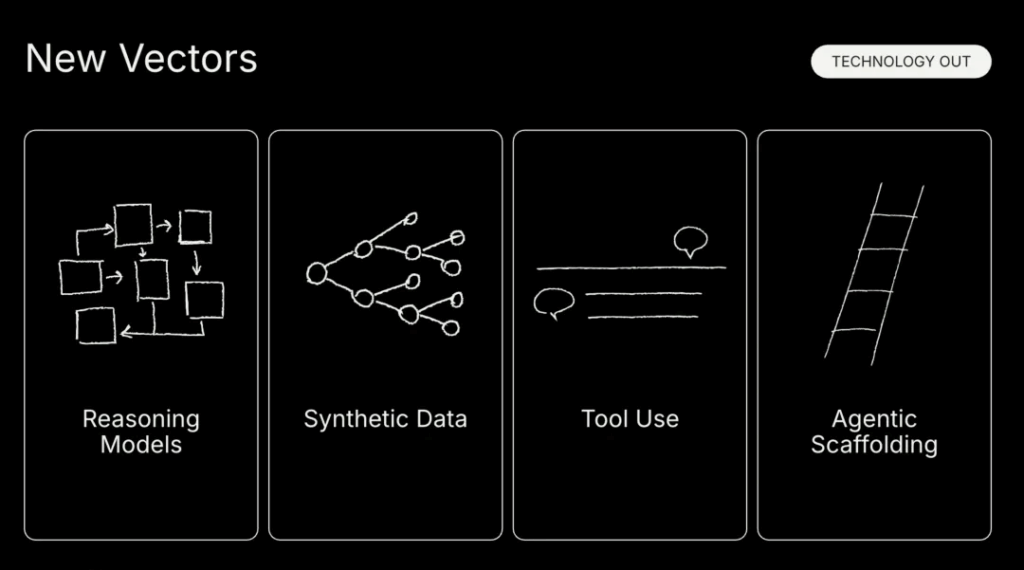
On the spot, Sonya played a voice demonstration, and the sound was so natural that it was difficult to tell whether it was a human or an AI. “The gap between science fiction and reality is being bridged at an amazing speed, and it feels like the Turing test is really quietly coming to us.”
The second key breakthrough is the field of programming. Sonya pointed out that this field has achieved a “screaming product market fit”. Since Anthropic’s Claude 3.5 Sonnet was released last fall, there has been a rapid “vibe shift” in the field of programming. People now use AI programming to make impressive results, such as someone who uses “vibe coding” to make a replacement for DocSend by themselves.
“Whether you are an experienced ‘ten times efficient’ engineer or someone who doesn’t know how to program at all, AI is fundamentally changing the accessibility, speed and economic benefits of software creation,” Sonya explains.
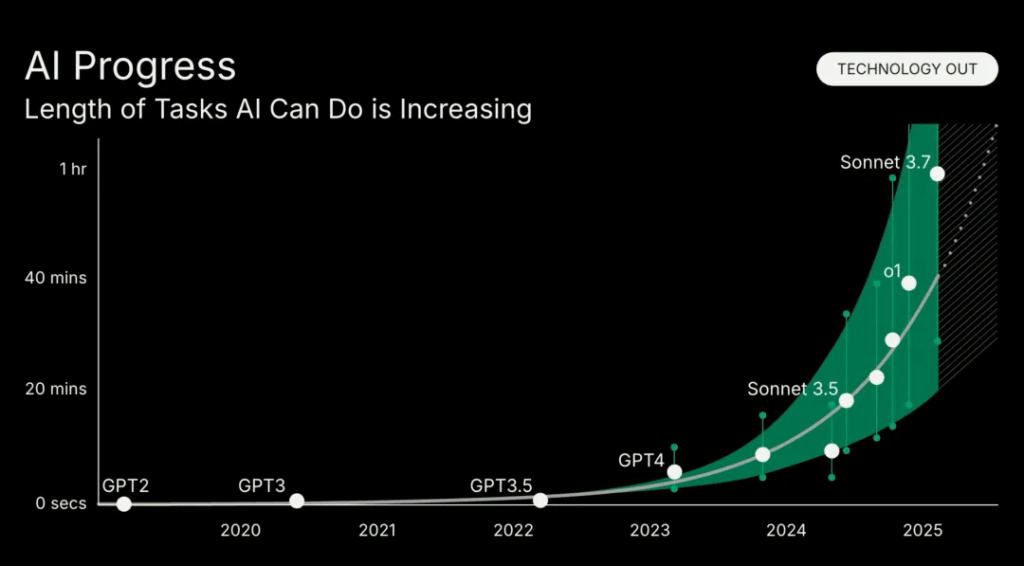
From a technical point of view, while advances in pre-trained models appear to be slowing down, the research ecosystem is looking for new breakthroughs. The most important development is OpenAI’s inference capabilities, while technologies such as synthetic data, tool use and AI scaffolding are also developing rapidly, combining these factors to create artificial intelligence that can accomplish increasingly complex tasks.
Where is the value generated: the battlefield of the application layer is becoming hot
Sonya recalls that she once debated with her colleagues about the issue of AI value creation. She admitted that she was skeptical about GPT packaging applications at the time, while her partner Pat firmly believed that value would be generated at the application level. Now it seems that Pat is right. Judging from the actual situation of value creation, companies like Harvey and OpenEvidence that focus on starting from customer needs really create huge value.
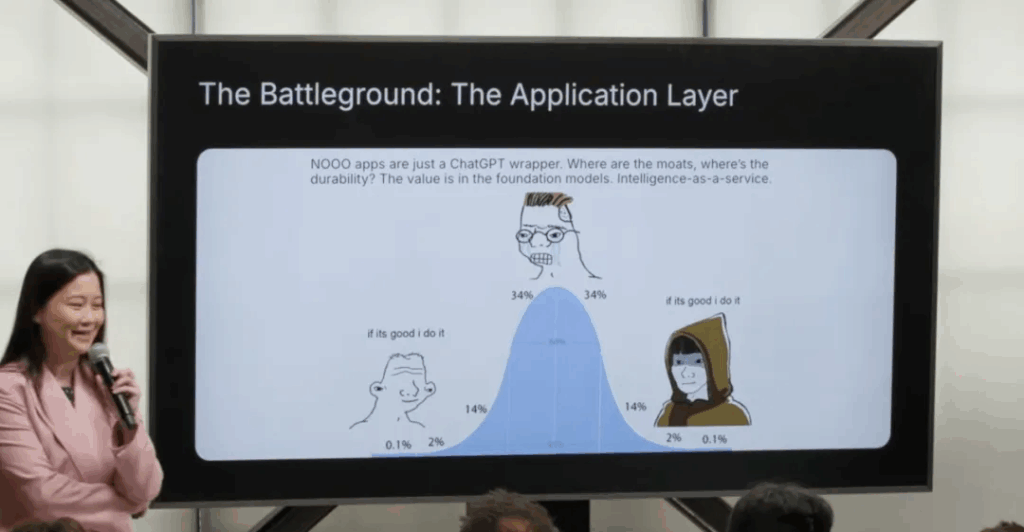
“We are very convinced that the application layer is where value finally comes together,” Sonya said. “And as the basic model increasingly penetrates this level, the battlefield is becoming increasingly fierce.”
Of course, she also joked that the real winner may be Nvidia CEO Jensen Huang, whose company has made huge gains from AI chip sales.
Sonya believes that the first batch of “killer applications” of AI have appeared. In addition to well-known applications such as ChatGPT, Harvey, Glean, Sierra, Cursor, and a number of emerging companies are emerging in various professional fields. She specifically mentioned that many new companies will be “agent-first” and the agents they sell will evolve from a prototype that is currently just a simple piece of paper to a truly powerful product.
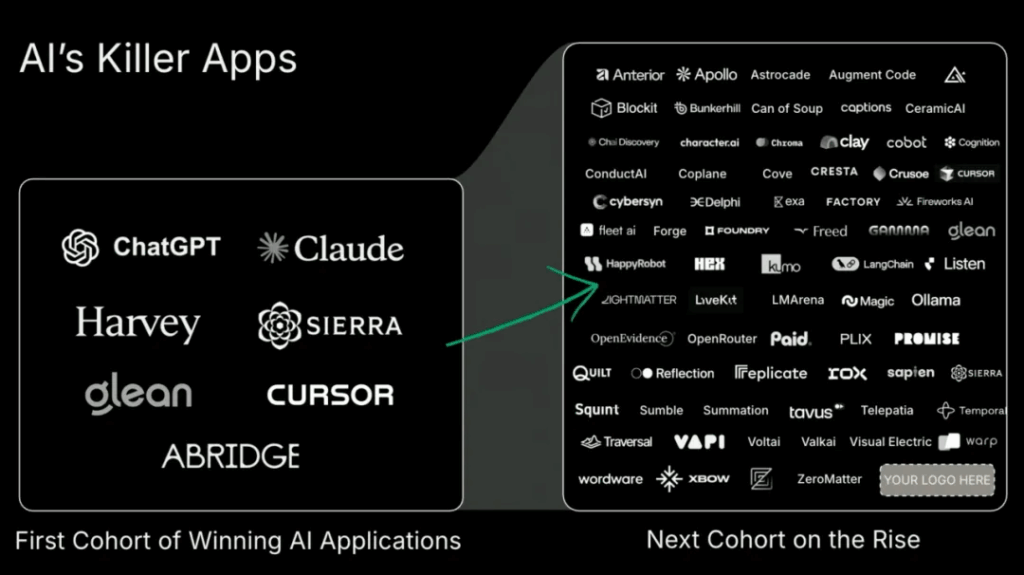
Vertical agent: AI agent specializing in specific fields
In the agent market in 2025, Sonya is particularly optimistic about the development of vertical agents. This provides an excellent opportunity for entrepreneurs who are deeply involved in a certain field. These vertical agents are trained end-to-end for specific workflows, using reinforcement learning techniques including synthetic data and user data, making AI systems perform well on very specific tasks.
There are already exciting early cases. In the security field, Expo shows that their agents can surpass human penetration testers; in the DevOps field, Traversal has created better AI troubleshooters than the best human troubleshooters; in the network field, Meter’s AI also surpasses network engineers.

Although these cases are still in their early stages, they are optimistic that vertical agents trained to solve specific problems can perform beyond today’s best human experts.
Sonya also proposed the concept of “abundance era”. Take programming as an example, what happens when labor becomes cheap and sufficient? Will we get a lot of low-quality content generated by AI? What happens when “taste” becomes a scarce asset? The answers to these questions will herald how AI can change other industries.
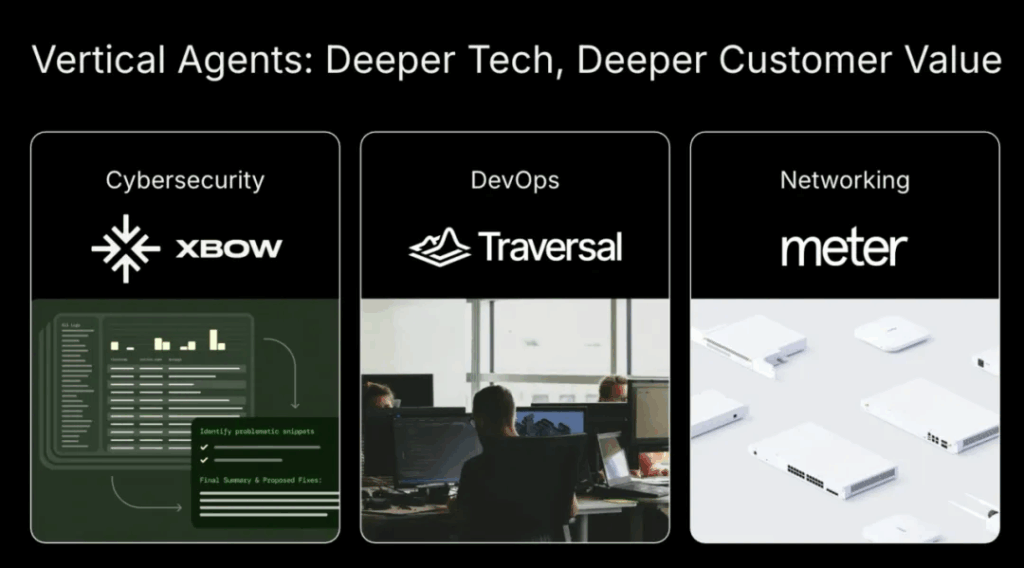
Intelligent Economy: The Next Important Stage of AI
In the final part of the speech, Konstantine Buhler looked forward to the next important stage of AI – the “agent economy”. The AI Ascent conference began to discuss agents a year ago, when these machine assistants were just beginning to form a business model. Today, these machine networks, called “agent swarms”, have played an important role in many companies and become a key part of the AI technology stack.
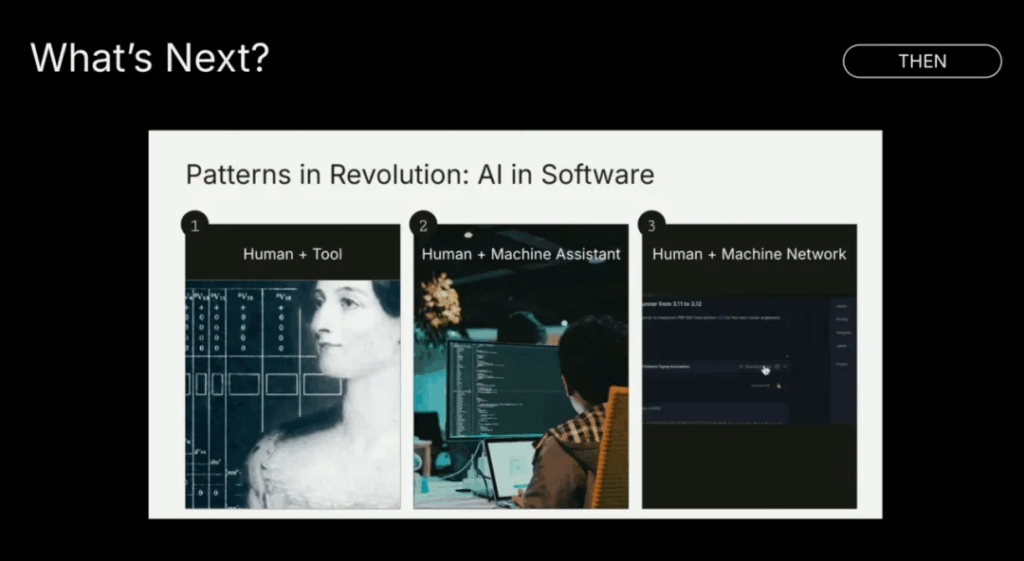
Konstantine predicts that this will further develop into a smart economy in the next few years. In this economy, agents not only convey information, they can also transfer resources, conduct transactions, record behaviors from each other, understand trust and reliability, and have their own economic system.
“This economic system does not exclude humans, it revolves around humans,” explains Konstantine. “Agencies cooperate with humans, and humans also collaborate with the agents to form this intelligent economy.”
Three major technical challenges to building an intelligent economy
To achieve this grand vision, we face three key technical challenges:
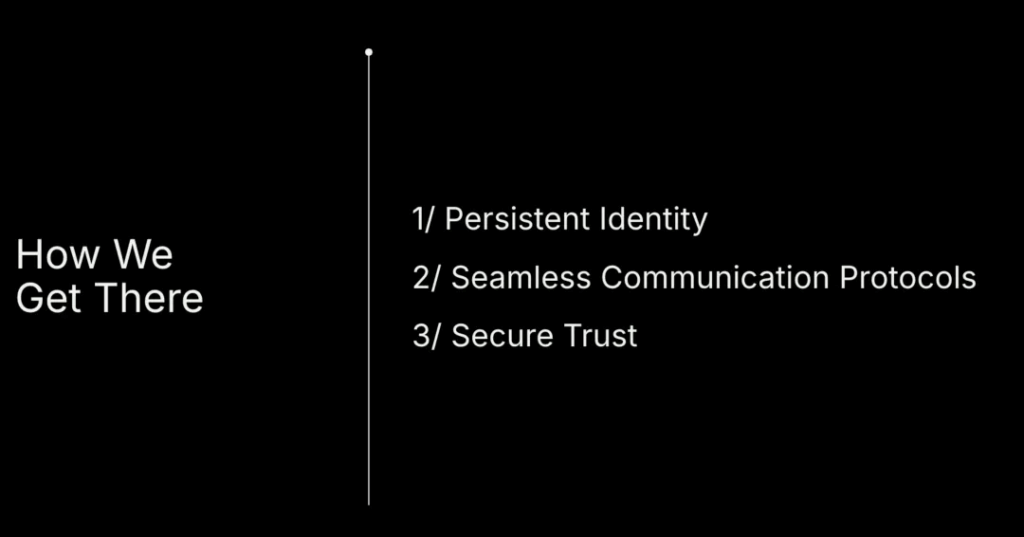
The first challenge is persistent identity. Konstantine explains that persistent identity actually contains two aspects. First, the agent itself needs to maintain consistency. If you deal with a business person and he changes every day, you will most likely not work together for a long time. The agent must be able to maintain its own personality and understanding. Second, the agent needs to remember and understand you. If your partner knows nothing about you and can hardly even remember your name, it can also pose a challenge to trust and reliability.
Current solutions such as RAG (retrieval enhancement generation), vector databases and long context windows are all trying to solve this problem, but there are still major challenges in achieving true memory, memory-based self-learning, and maintaining agent consistency.
The second challenge is seamless communication protocols. “Imagine how personal computing would be without TCP/IP and the Internet,” Konstantine said. “We are just starting to build a protocol layer between agents now.” He specifically mentioned the development of MCP (Model Collaboration Protocol), which is just one of a series of future protocols for information transfer, value transfer and trust transfer.
The third challenge is security. The importance of security and trust is even more prominent when you can’t communicate face to face with your partners. In an intelligent economy, security and trust will be more important than in the current economy, which will give birth to a complete industry around trust and security.
From certainty to randomness: The fundamental change in mindset
Konstantine believes that the arrival of an intelligent economy will fundamentally change our way of thinking. He proposed the concept of “stochastic mindset”, which is completely different from traditional deterministic thinking.
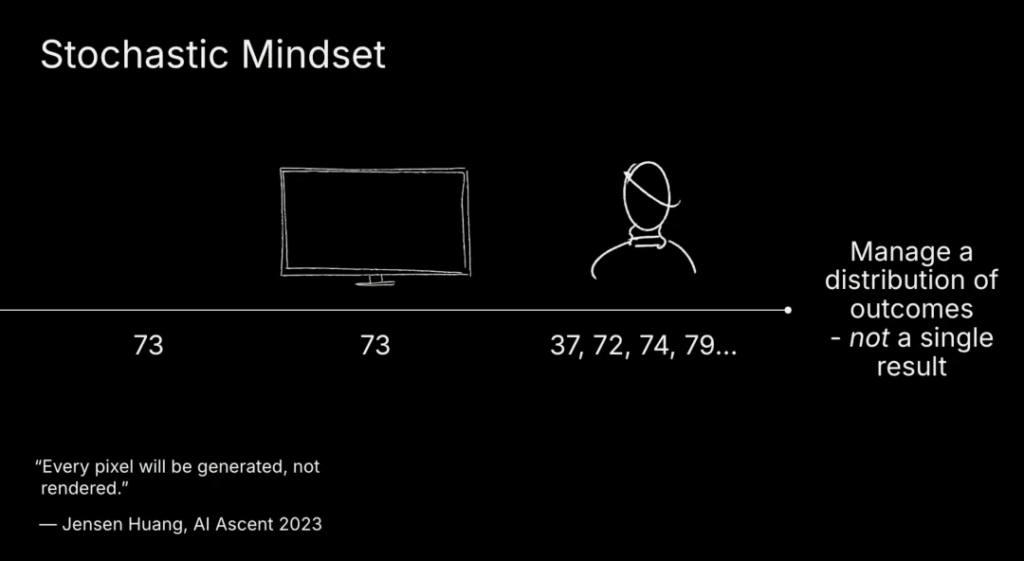
“Many of us fall in love with computer science because it is so certain,” he explained. “You program a computer to do something and it will do it, even if the result is a segfault. Now, we are entering an era where computing will be random.”
He used a simple example: If you let the computer remember the number 73, it will be remembered tomorrow, next week, next month. But if you let a person or AI remember it, it may remember 73, or it may remember 37, 72, 74, or the next prime number 79, or even nothing. This shift in mindset will have a profound impact on the way we deal with AI and agents.
The second change is management mindset. In an agent economy, we need to understand what an agent can do and cannot do, which is similar to the process of transitioning from an independent contributor to a manager. We will need to make more complex management decisions, rather than how to stop certain processes, how to provide feedback, etc.
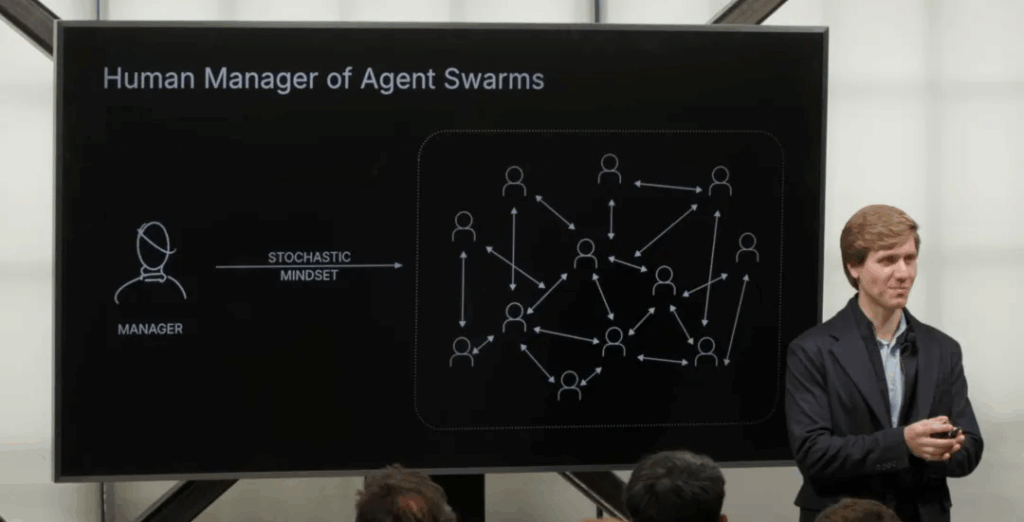
The third major change is a combination of the first two: we will have a stronger leverage effect, but the certainty will be significantly reduced. “We’re entering a world where you can do more, but you have to be able to manage that uncertainty and risk,” Konstantine said. “In this world, everyone here is perfect for thriving.”
The ultimate of leverage effect: reshaping work, companies and economy
A year ago, Sequoia predicted that various functional departments in the organization would begin to have AI agents and gradually integrate them, and eventually the entire process will be completed by AI agents. They even boldly predicted that the first “one-person unicorn company” would appear.
Although the “one-person unicorn” has not yet been realized, we have seen the company expand at an unprecedented rate, using fewer people than ever before. Konstantine believes we will reach unprecedented levels of leverage.
“End of the time, these processes and agents will merge to form a network of neural networks,” he predicts, “this will change everything, reshape individual work, reshape corporate structure, and reshape the entire economy.”
Through this speech, three partners of Sequoia outlined a clear path for AI from its current development to its possible evolution in the future. From macro analysis of market opportunities, to insights into application-level value, and to the vision of the intelligent economy, they not only explained What and Why, but more importantly, they pointed out How – how to seize the initiative and create value in this trillion-level opportunity.
For entrepreneurs, this is not only a feast of ideas, but also a guide to action: grasp the value of the application layer, build real rather than “atmosphere” revenue, build a data flywheel, prepare for the upcoming intelligent economy, and always remember that now is the time to go all out and keep moving forward at maximum speed.
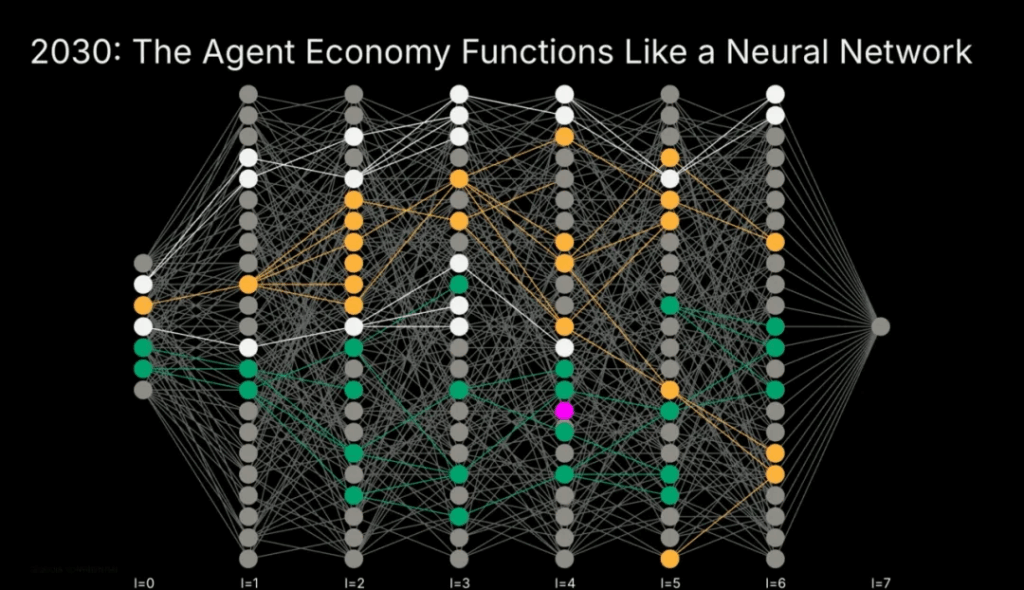
Author:深思圈
Source:https://mp.weixin.qq.com/s/2jLBAdvGBRxdVdyjldQjdA
The copyright belongs to the author. For commercial reprints, please contact the author for authorization. For non-commercial reprints, please indicate the source.





